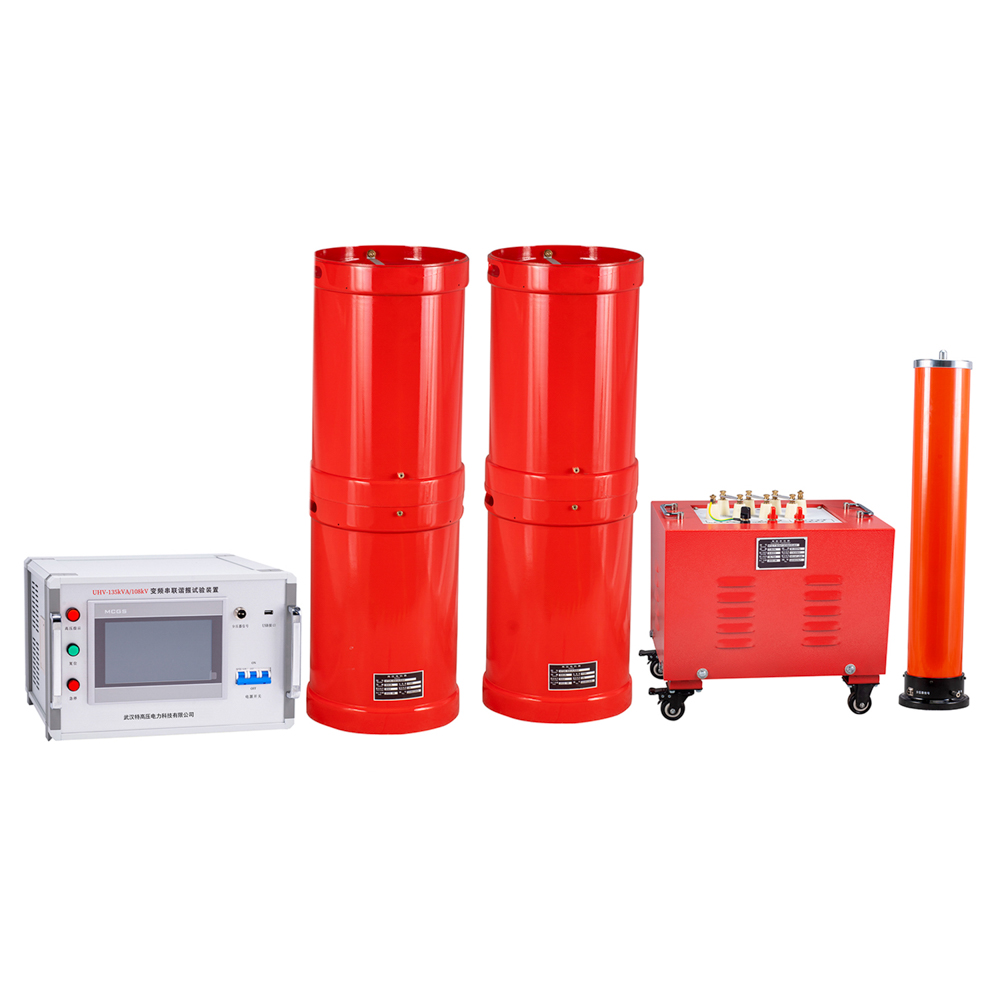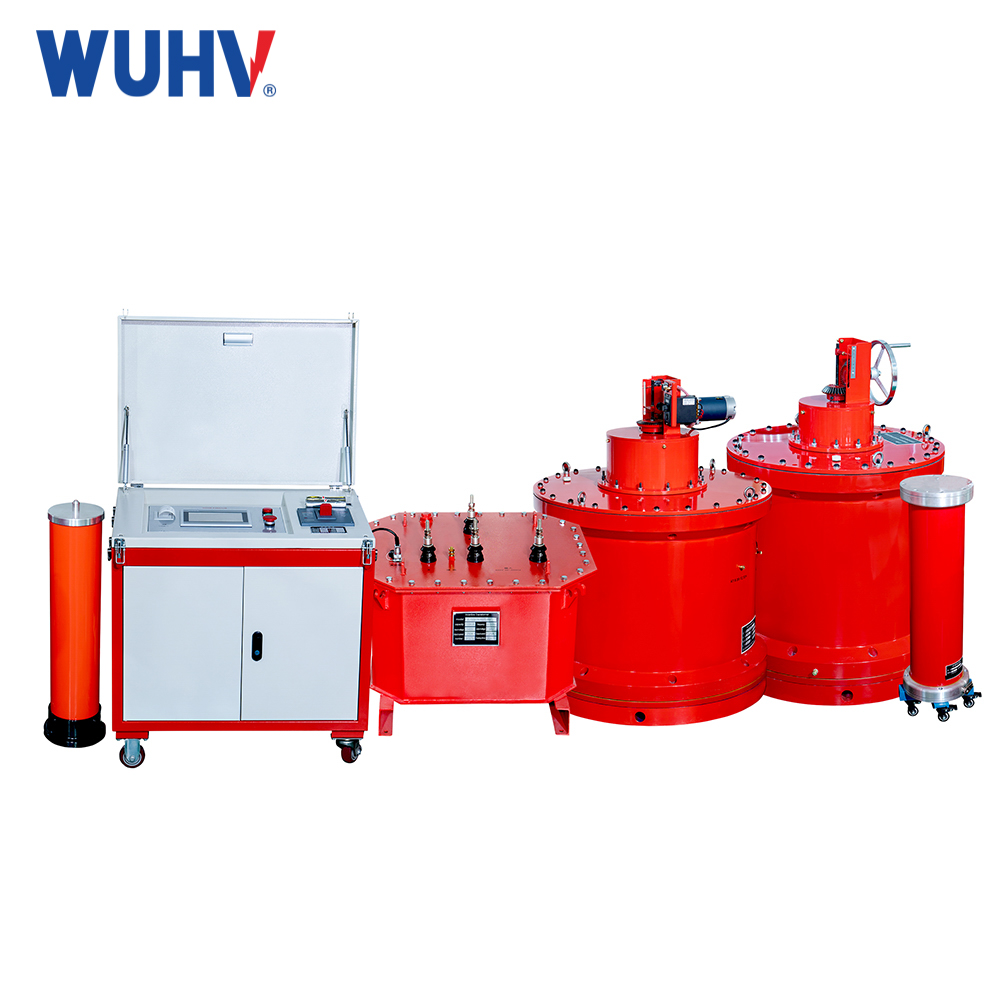The series resonance under UHV power can help many power workers conduct various power tests more conveniently.

The frequency conversion resonance withstand voltage test device adopts a dedicated broadband voltage regulation power supply, with a voltage regulation range of ac0-400V, a frequency modulation range of 30-300Hz, and a frequency fineness of up to 0.1Hz; The output waveform within the entire frequency range is good, ensuring the stability and safety of the instrument at the minimum weight and volume. The device consists of a frequency and voltage regulating power supply, an excitation transformer, a reactor, and a capacitor voltage divider. The frequency conversion resonance withstand voltage test belongs to the high-voltage withstand voltage test. There are many things to pay attention to during the testing process. The circuit connection and precautions of the frequency conversion resonance withstand voltage test device are as follows:
Through on-site testing of the full load wiring method of different specifications of frequency conversion resonance withstand voltage test devices, share how the components of the frequency conversion resonance withstand voltage test device are connected. We mainly introduce the wiring of the frequency conversion resonance withstand voltage test device, which includes the following points:
1. Variable frequency power supply in the frequency resonance withstand voltage test device:
The input part of the variable frequency power supply is also the power input port of the entire system equipment of the variable frequency resonance withstand voltage test device. The power supply here can be two-phase 220V or three-phase 380V. The difference between different voltages is that two-phase 220V can only output half of the load capacity of the equipment, while three-phase 380V can fully output the frequency conversion resonance withstand voltage test device.
2. Excitation transformer in frequency conversion resonant withstand voltage test device:
There are various wiring methods, but regardless of which one is used, the high-voltage head is always connected to the "X" pole metal wire at the bottom of the series reactor through a high-voltage flexible wiring terminal located in the upper right corner. And the high-voltage flexible wire connected here must be suspended and cannot be used for mopping the ground. The high-voltage tail is always the terminal in the lower left corner, which is short circuited to the grounding terminal of the excitation transformer and maintains good grounding.
3. Precautions for reactors, voltage dividers, and compensating capacitors in the frequency conversion resonant withstand voltage test device:
When testing the frequency conversion resonance withstand voltage test device, insulation pads or brackets should be laid at the bottom of the reactor in contact with the ground. The connecting wires of reactors, voltage dividers, and compensating capacitors should be directly connected as much as possible to avoid faults.
4. The safety distance during the testing of the frequency conversion resonance withstand voltage test device:
Before the frequency conversion series resonance test, it is necessary to ensure that there is sufficient safety distance around the test area to avoid equipment damage or personnel injury. The specific safe distance is considered to be 1.3cm per 1kV voltage. During the testing process, it is prohibited to enter the testing isolation area to ensure testing safety.



















